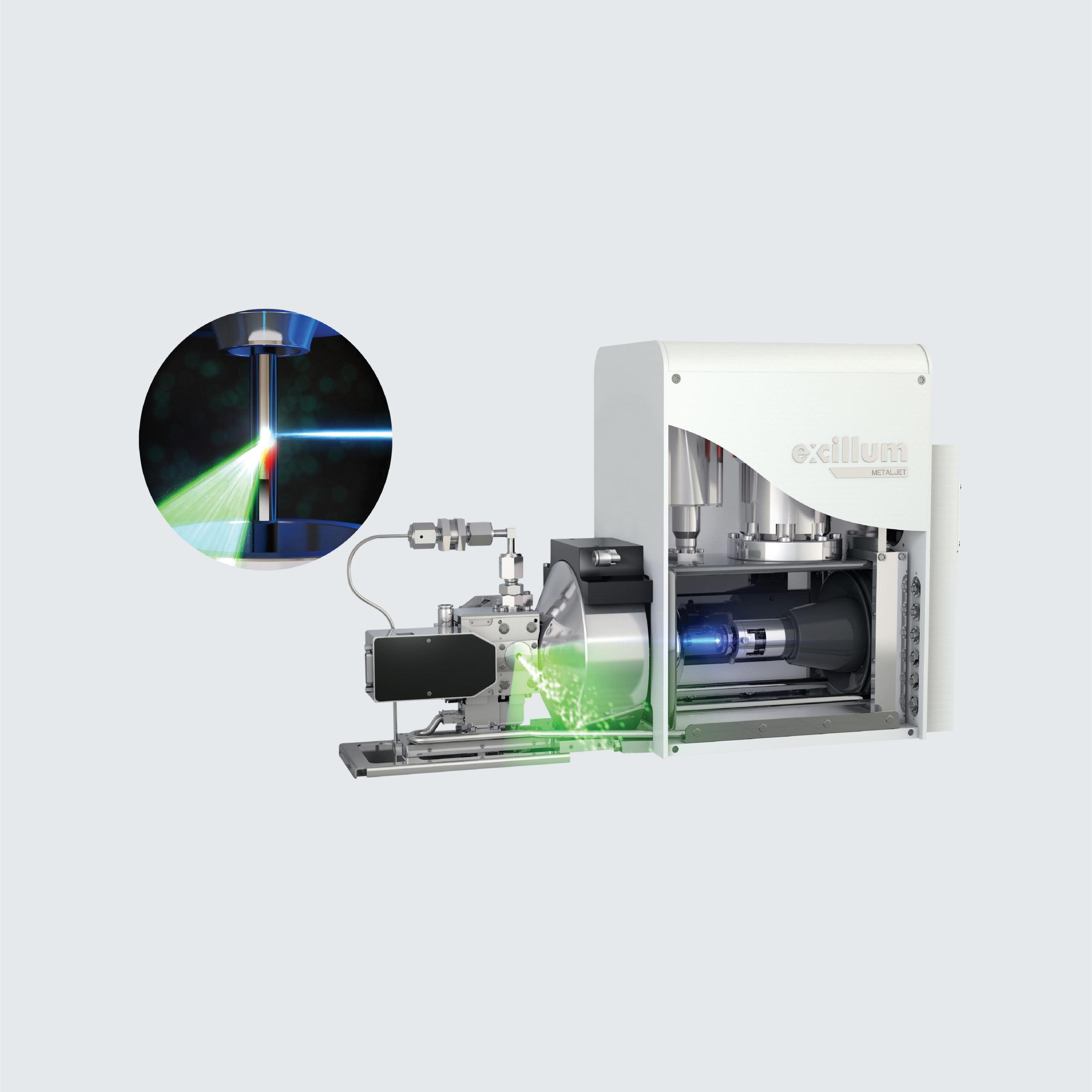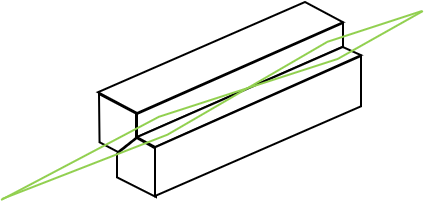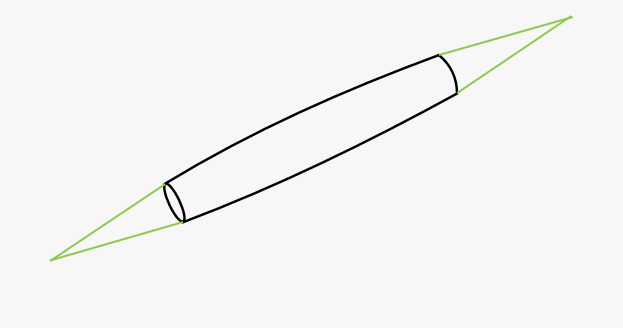MetalJet with optics
For state-of-the-art performance
Focused and/or collimated beams of mono- or polychromatic X-rays can thereby be generated with state-of-the-art performance.
Excillum can offer both complete source + optics solutions as well as advice on integration with optics from third party suppliers.


Montel multilayer optics
A Montel optic is two mirrors shaped in one plane each placed next to each other so that X-rays reflected from both surfaces are focused or collimated in two dimensions. Each mirror is furthermore coated with a multilayer structure enhancing the reflectivity for a specific X-ray energy.
In collaboration with our optics-supplier partners Excillum can offer Montel optics with synchrotron-quality low figure errors thereby preserving the brightness of the X-ray emission from a MetalJet source.
Below are examples of Montel optics that are readily available achieving state of the art flux densities in small spot applications.
ExMontel-G-105/395/7.5
A gallium Kα focusing optic ideally suited for, e.g., single crystal X-ray diffraction achieving state-of-the art flux density of 6e11 ph/s/mm2
Source to mirror center | 105 mm | Convergence angle | 7.5 mrad |
Mirror center to focus | 395 mm | Transmitted energy | 9.2 keV |
Optics length | 150 mm | Transmitted wavelength | 1.3 Å |
Source model | Jet material | Power | Acceleration voltage | Nominal primary X-ray spot size | Spot size in mirror focus | Total flux in focus2 | Peak flux density2 | Mean flux density in 50 µm diameter2 |
MetalJet D2+ | ExAlloy-G1 | 250 | 70 | 20 | 80 | 5x109 | 6x1011 | 5x1011 |
1) Accurately measuring or simulating photon flux, spot size etc. is challenging and values obtained can be presented in many ways given, e.g., the definition of spot size. Values can also change somewhat over the course of months as, e.g., the source cathode ages. Values presented are nominal but in many cases expected to be met for several thousand hours. We will be happy to provide more detail as for exact measurement methods and conditions as well as simulation methods and statistics of available data on a case by case basis.
2) In-vacuum values assuming evacuated or He-purged beam path.
ExMontel-I-110/390/3.15
An indium Kα focusing optic ideally suited for, e.g., single crystal X-ray diffraction achieving state-of-the art flux density of 6e9 ph/s/mm2
Source to mirror center | 110 mm | Convergence angle | 3.15 mrad |
Mirror center to focus | 390 mm | Transmitted energy | 24 keV |
Optics length | 150 mm | Transmitted wavelength | 0.51 Å |
Source model | Jet material | Power | Acceleration voltage | Nominal primary X-ray spot size | Spot size in mirror focus | Total flux in focus2 | Peak flux density2 | Mean flux density in 50 µm diameter2 |
MetalJet D2+ | ExAlloy-I3 | 250 | 70 | 20 | 70 | 3x107 | 6x109 | 4x109 |
MetalJet E1+ | ExAlloy-I2 | 1000 | 160 | 30 | 90 | 1.9x108 | 1.3x1010 | 1.1x1010 |
1) Accurately measuring or simulating photon flux, spot size etc. is challenging and values obtained can be presented in many ways given, e.g., the definition of spot size. Values can also change somewhat over the course of months as, e.g., the source cathode ages. Values presented are nominal but in many cases expected to be met for several thousand hours. We will be happy to provide more detail as for exact measurement methods and conditions as well as simulation methods and statistics of available data on a case by case basis.
2) In-vacuum values assuming evacuated or He-purged beam path.
3) Note that some amount of broad-band lower-energy x-rays are also transmitted by the optic due to total external reflection on the mirror surfaces. Depending on application these X-rays may need to be managed by filtering or using detector having an energy-threshold capability.

Capillary optics
Capillary optics consist of a single capillary (monocapillary) or a bundle of capillaries (polycapillary) of glass reflecting polychromatic X-rays through total external reflection in each capillary. Capillary optics are thereby largely polychromatic.
Currently, we do not offer any specific capillary optic. However, we have experiences with integrating our MetalJet X-ray sources with such optic and good contacts with various capillary optics suppliers. Please contact us to discuss any specific request where capillary optics could be suitable.
As an introduction to polycapillary optics we recommend the master’s thesis Polycapillary X-Ray Optics for Liquid-Metal-Jet X-Ray Tubes by Malcolm Lindqvist (Excillum employee). There, flux densities of 2.4×1013 are measured in a focus size of 12-14 µm.
User stories
Experiences with the Excillum MetalJet X-ray sources
Learn about some of our customers’ experiences with our state-of-the-art X-ray sources.
Questions about our products?
Speak to our experts
We have a growing organization and a network of partners with the capabilities and expertise to maximize the benefits of our technology in your application.

Mirdad Rabbinson
Field Service Engineer
Customer service
Our MetalJet and NanoTube X-ray sources are designed to ensure the highest levels of performance and reliability. Whenever regular maintenance, troubleshooting or optimization are required, our team of highly experienced engineers is available to provide worldwide service and support. We also offer a wide range of preventive maintenance and troubleshooting programs to ensure that every customer achieves the highest uptime and trouble-free operation.
